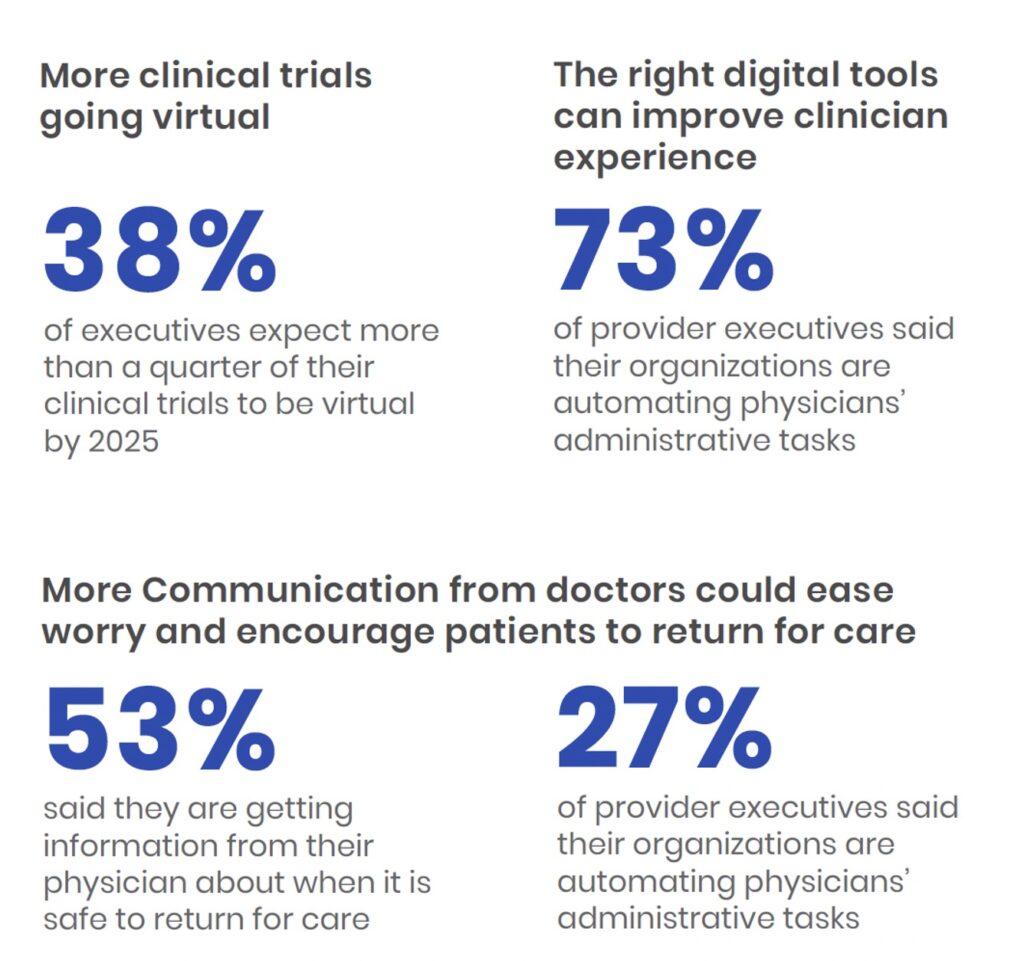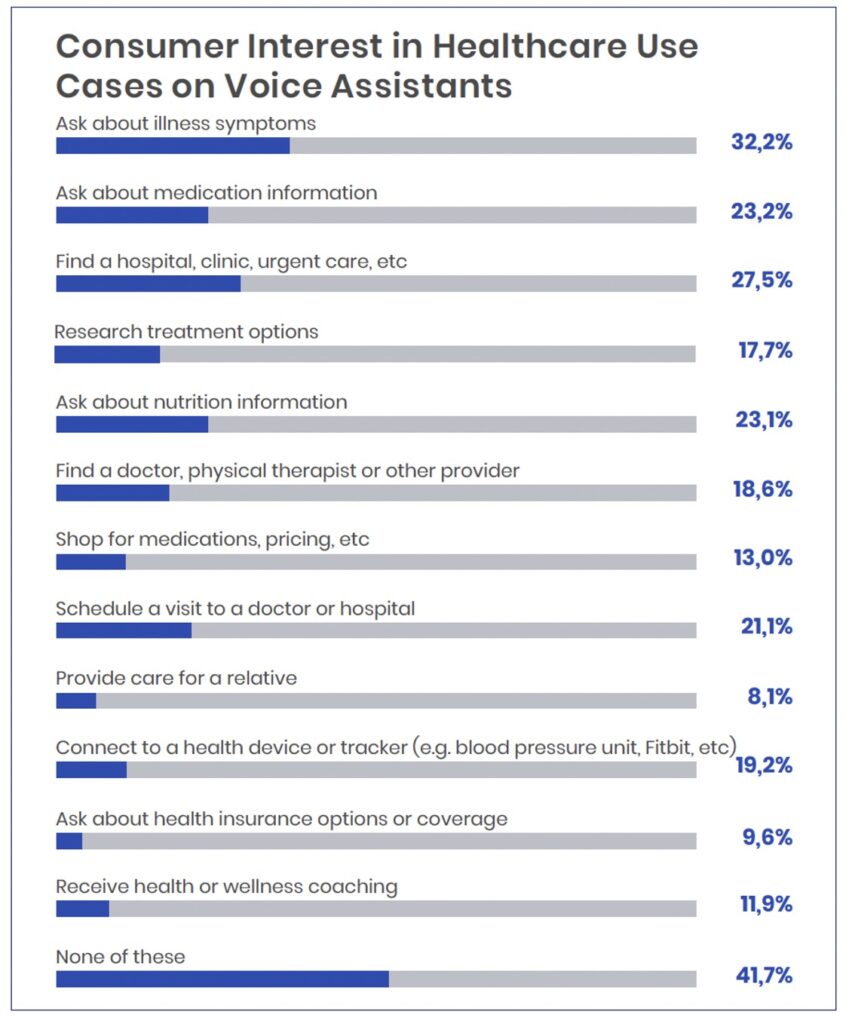In today’s healthcare landscape, the patient journey holds the utmost importance. Emerging technology, shifting industry dynamics, and evolving consumer expectations are transforming the modern patient experience.
As a result, an increasing number of healthcare organizations are focusing on providing personalized, patient-centric care that enhances patient involvement and results in better health outcomes—and artificial intelligence (AI) is assisting them in this endeavour.
By leveraging the power of Artificial intelligence (AI), pharmaceutical companies can gather, analyze, and act on patient data in real-time, leading to better healthcare outcomes. By processing large amounts of patient data from various sources, such as electronic health records, wearables, and social media, AI algorithms can gain insights into patient behavior, preferences, and outcomes, which can be used to develop more effective treatments and interventions that are tailored to the needs of individual patients.
This personalized approach not only improves patient outcomes and satisfaction but also reduces healthcare costs. Furthermore, AI can help to improve patient safety by reducing the risk of errors and adverse events, such as misdiagnosis or delayed treatment.
In this article, we will deep dive into how AI is revolutionizing patient-centricity in the pharmaceutical industry. We will also discuss the potential of emerging AI technologies, the challenges and risks associated with AI, and how pharmaceutical companies can mitigate these risks and ensure that their use of AI aligns with patient-centric values.
5 Ways AI in Healthcare Enhances the Patient Experience
At the heart of every successful healthcare organization lies a commitment to keeping patients healthy and happy. As a patient’s experience has a significant impact on their health outcomes, it’s vital to ensure that they receive high-quality care that meets their unique needs. Leveraging the power of Artificial Intelligence (AI) can be a game-changer in improving the patient journey.

Source: BayBridge Digital
Let’s explore 5 ways in which AI can optimize the patient experience:
1. Personalized treatment plans: AI algorithms have the capability to analyze vast amounts of patient data, including medical history, genetic makeup, lifestyle choices, and other factors to develop highly personalized treatment plans. This patient-centric approach can significantly improve the effectiveness of treatments and enhance overall healthcare outcomes.
For instance, Novartis developed a cancer treatment drug, that utilizes advanced machine learning algorithms to identify which patients would respond best to the treatment. This innovative approach enables the company to provide more targeted and effective treatments while minimizing the potential side effects for patients. By harnessing the power of AI to develop personalized treatment plans, healthcare organizations can provide better care to patients, ultimately improving their health outcomes and satisfaction while reducing healthcare costs.
2. Improved patient engagement: AI can facilitate more frequent and meaningful interactions between patients and healthcare providers, improving patient engagement.

Source: BayBridge Digital
Chatbots and virtual assistants powered by AI can provide patients with real-time access to information, support, and guidance, helping to improve patient satisfaction and adherence to treatment plans.
For example, Woebot Health developed a chatbot that uses AI to help patients manage mental health issues. The chatbot engages with patients in natural language conversations, helping them to manage symptoms, practice coping strategies, and provide emotional support. This kind of personalized, on-demand support can help patients to feel more connected to their care providers and ultimately improve patient outcomes.
3. Prediction and prevention of health problems: By analyzing patient data, AI algorithms can identify risk factors for various health conditions and provide early warning signs that can be acted upon before they escalate into severe health issues.
For instance, Babylon Health developed an AI-based tool that can predict a patient’s likelihood of developing heart disease based on their medical history, lifestyle, and other relevant factors. By detecting potential risks early on, patients can receive preventative care and take action to improve their health before the condition becomes critical.
4. Enhancing patient safety: AI-powered diagnostic tools can help physicians to identify and diagnose health conditions more accurately and quickly, reducing the likelihood of misdiagnosis or delayed treatment.
For instance, IDx-DR is an AI-based diagnostic tool that uses retinal imaging to detect diabetic retinopathy, a leading cause of blindness. The tool has been approved by the US Food and Drug Administration (FDA) and is being used in clinics across the US.
5. Clinical trials and drug discovery: AI can also improve patient-centricity in clinical trials and drug discovery. With the help of AI algorithms, pharmaceutical companies can now analyze massive amounts of patient data to identify patterns and develop new treatments.
For instance, Atomwise, a startup that uses AI to accelerate drug discovery, has identified two new drugs that can be used to treat Ebola and multiple sclerosis.
Navigating Risks and Challenges for Integrating AI into Patient-Centric Pharma
Integrating AI into patient-centric pharma has the potential to revolutionize the industry and improve patient outcomes. However, there are also risks and challenges associated with this integration.
Here are some of the key challenges and examples of how to navigate them:
1. Data privacy and security: The use of AI in pharma relies heavily on the collection and analysis of patient data. This raises concerns about data privacy and security, especially given the sensitive nature of health information. Companies must ensure that patient data is stored securely and that patient privacy is protected at all times. For example, implementing encryption and access controls, as well as adhering to data protection regulations such as HIPAA in the US and GDPR in Europe, can help to mitigate the risks.
2. Bias and fairness: AI algorithms can inadvertently perpetuate biases if the data used to train them is biased. This can result in unfair and discriminatory outcomes, particularly in areas such as drug discovery and clinical trials. To address this challenge, companies should ensure that the data used to train AI models is representative and unbiased. Additionally, transparency and explainability in AI decision-making can help to identify and mitigate potential biases.
3. Regulatory compliance: The use of AI in pharma is subject to various regulations, such as the FDA’s guidance on AI and machine learning in medical devices. Companies must ensure that their use of AI complies with all relevant regulations and that they are able to demonstrate the safety and efficacy of their AI-based products and services.
4. Integration and implementation: Integrating AI into existing pharma workflows can be challenging. It requires significant changes to infrastructure, processes, and culture, and may face resistance from stakeholders who are unfamiliar with AI technology.
To overcome these challenges, companies should develop clear implementation plans that involve all relevant stakeholders, provide adequate training and support, and focus on building a culture of innovation and continuous improvement.
Strategies for Safe Implementation of AI in Pharma
The safe implementation of AI in pharma requires careful planning and execution.
Here are some key strategies that can help mitigate risks and ensure the safe use of AI in pharma:
1. Start with a clear objective: Before implementing AI, it’s important to define clear objectives and goals for its use. This involves identifying areas where AI can make the most significant impact and defining specific outcomes expected from its use. With a well-defined objective, pharma companies can channel their efforts toward integrating AI in a way that aligns with their objectives.
For Example, A pharmaceutical company may implement AI to improve the accuracy of drug safety monitoring. The objective could be to identify adverse drug reactions faster and more accurately, ultimately leading to improved patient safety.
2. Establish a cross-functional team: Implementing AI in pharma can be a complex and multifaceted process, requiring collaboration between various stakeholders, including data scientists, clinicians, regulatory experts, and IT professionals. Establishing a cross-functional team can help ensure that everyone is aligned and working together towards a common goal.
For example, a cross-functional team could be established to develop an AI-based diagnostic tool to identify patients at risk of developing heart disease. Data scientists could develop the AI algorithm, clinicians could provide feedback on the tool’s clinical relevance, regulatory experts could ensure compliance with regulations, and IT professionals could oversee the tool’s implementation and maintenance. Such collaboration ensures that AI is deployed safely and effectively, ultimately leading to better patient outcomes.
3. Ensure data quality and integrity: The accuracy and reliability of AI models depend on the quality and integrity of the data used to train them. Therefore, it’s imperative to ensure that the data used to train these models are of high quality and free from biases.
Example: A pharmaceutical company can leverage AI to analyze patient data to identify potential drug candidates. In this scenario, the company would need to ensure that the data used to train the AI model are accurate, complete, and free from any potential biases that could skew the results. By doing so, the company can ensure that the AI model produces reliable and actionable insights.
4. Develop a robust validation process: Before implementing AI in pharma, it’s essential to validate the accuracy and effectiveness of the AI models being used. This includes testing the AI models against gold-standard methods and continuously monitoring and evaluating their performance.
For instance, a pharmaceutical company that develops an AI-powered tool to predict drug interactions must validate the accuracy of the tool by testing it against established gold-standard methods for predicting drug interactions. Continuous monitoring and evaluation of the tool’s performance are also necessary to identify any potential issues or biases that may arise over time. By implementing rigorous validation and testing procedures, pharma companies can ensure that their AI models are reliable, effective, and safe for use in patient care.
5. Implement a risk management plan: AI in pharma comes with potential risks, including data privacy and security risks, as well as risks related to the accuracy and reliability of AI models. It’s essential to develop a comprehensive risk management plan that identifies potential risks and outlines strategies for mitigating them.
Example: A pharmaceutical company can develop an AI-powered tool to support clinical decision-making. The risk management plan would identify potential risks, such as incorrect diagnosis due to inaccurate AI predictions. The plan would then outline strategies for mitigating these risks, such as ensuring that the AI predictions are validated by a clinician before being acted upon.
6. Develop ethical guidelines: The ethical use of AI in pharma is of paramount importance to ensure that patients receive safe and effective treatments. In order to align with patient-centric values, companies can establish ethical guidelines that promote transparency, fairness, and accountability in the use of AI.
These guidelines can help build trust with patients and other stakeholders by ensuring that AI models are designed to prioritize patient well-being and uphold ethical standards.
For example, guidelines can prohibit discrimination against patients based on factors such as age, gender, or ethnicity. Additionally, companies can ensure that their AI models are continuously evaluated and refined to maximize benefits to patients and minimize risks of harm.
7. Train staff on the ethical use of AI: To ensure the responsible use of AI, companies can provide their staff with training on the ethical use of AI. This can help to build a culture of responsible AI use within the organization and ensure that staff understands the potential risks and challenges associated with the technology.
For example, training can focus on promoting transparency, fairness, and accountability in AI models, and mitigating the risk of bias in AI algorithms. Staff members can also be trained on best practices for protecting patient privacy when using AI, including ensuring that data is anonymized and encrypted.
8. Incorporate patient feedback: Incorporating patient feedback into AI models is a crucial step in ensuring the safety and efficacy of AI-based products and services in the pharma industry. Companies that prioritize patient-centricity can collect feedback through various means and utilize it to identify areas for improvement in their AI models.
Patient feedback can provide valuable insights into the patient experience, including factors such as usability, accessibility, and overall satisfaction. By taking into account patient feedback, companies can make informed decisions about how to optimize their AI models to better meet patient needs, ultimately resulting in improved outcomes.
For instance, a pharmaceutical company may receive patient feedback that an AI-based treatment is causing discomfort or adverse side effects. The company can then incorporate this feedback into its AI model to identify potential solutions and make necessary adjustments to improve patient safety and comfort.
Conclusion
The potential of artificial intelligence (AI) to revolutionize the pharmaceutical industry and foster patient-centricity is immense. With the utilization of AI, pharmaceutical companies can effectively gather, analyze, and act upon patient data in real-time, leading to improved healthcare outcomes. AI can aid in providing personalized treatments and interventions that cater to the unique needs of individual patients, which can enhance patient satisfaction and reduce healthcare costs.
Nevertheless, integrating AI in pharma comes with inherent challenges and risks that must be addressed through the development of ethical guidelines, staff training, and patient feedback incorporation. By implementing these strategies, pharma companies can safely and efficiently use AI to promote patient-centric care, which in turn will lead to improved patient health outcomes.
Found this article interesting?
At Eularis, we are here to ensure that AI and FutureTech underpins your pharma success in the way you anticipate it can, helping you achieve AI and FutureTech maturation and embedding it within your organisational DNA.
We are the leaders in creating future-proof strategic AI blueprints for pharma and can guide you on your journey to creating real impact and success with AI and FutureTech in your discovery, R&D and throughout the biopharma value chain and help identify the optimal strategic approach that moves the needle. Our process ensures that you avoid bias as much as possible, and get through all the IT security, and legal and regulatory hurdles for implementing strategic AI in pharma that creates organizational impact. We also identify optimal vendors and are vendor-agnostic and platform-agnostic with a focus on ensuring you get the best solution to solve your specific strategic challenges. If you have a challenge and you believe there may be a way to solve it with AR but are not sure how, contact us for a strategic assessment.
See more about what we do in this area here.
For more information, contact Dr Andree Bates abates@eularis.com.

